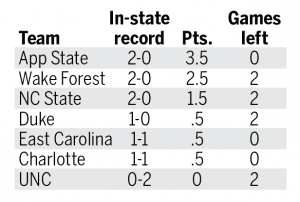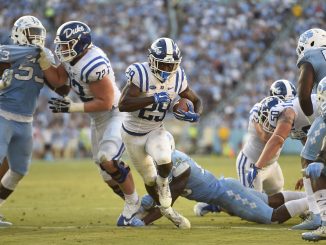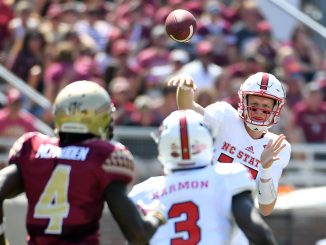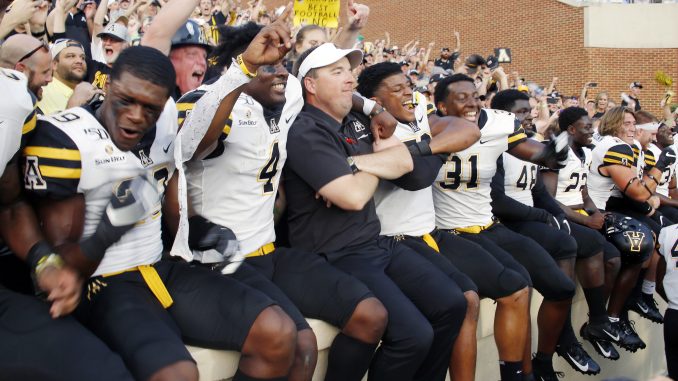
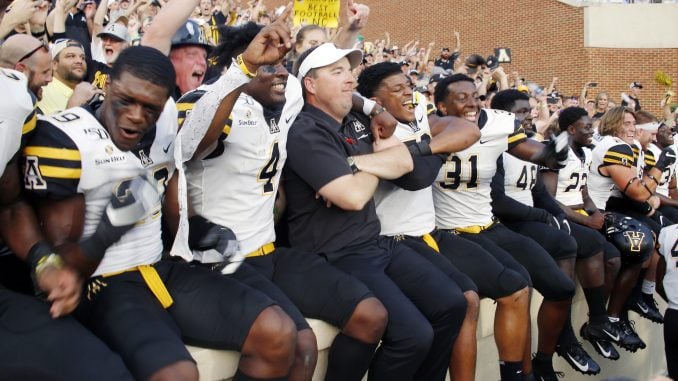
It started with Mack Brown three decades ago and was popularized again when NC State’s Tom O’Brien began using it as a way to get under rival North Carolina’s skin.
There’s no such thing as an actual state championship in college football, no revolving trophy such as that for the series between the nation’s three service academies, the Commander-in-Chief’s Trophy.
You’d never know it, though, the way fans, players and even coaches debate which school’s program is the Old North State’s best from year to year. It’s a topic that first came up during Brown’s original tenure with the Tar Heels.
After going 1-10 in each of his first two seasons in Chapel Hill in 1988-89, the always positive coach began talking about the state championship as a form of motivation for the players in his fledgling program.
“When we were here 30 years ago, at first we were trying to beat anybody,” Brown said earlier this season. “We had 20 losses and two wins, so we were trying to figure out what can we do to stir the players up.
“It’s been my philosophy my whole coaching career that if you can’t win at home, you can’t win on the road. If you can’t recruit at home, you can’t recruit out of state. So everything starts with your home state.”
Apparently, the theory holds water, because Brown’s teams won 16 straight games against in-state competition while sweeping the “state championship” competition in each of his final five seasons before leaving for Texas in 1997.
“People used to laugh at the state championship,” Brown said. “But all of our boosters liked it when we won it, so now they’re asking me to get it back.”
Talk of the state championship died down once Brown left. But it was resurrected when O’Brien came to State and led his team to five straight wins against rival UNC. He used the subject as a way of needling the folks in Chapel Hill, and it worked. The fact that Wake Forest fans also weren’t happy about it was just a bonus.
“I think that’s really important for our state,” the former Wolfpack coach said in 2009. “As I said last year when everybody got mad about the state championship thing, ‘Hey, we’re playing you this year. We’ll be here.’ The field’s 100 yards by 53. We’re going to Winston-Salem and see you other two guys in Raleigh.”
Back then, the mythical state championship was contested between the ACC’s Big Four programs. These days, East Carolina, Appalachian State and Charlotte have been added into the mix of FBS teams.
That has only added to the passion associated with the “who’s best” debate, especially after the Mountaineers marched into Kenan Stadium last month and staked their claim to the title by beating the Tar Heels.
“We went to Chapel Hill believing we were going to win,” Mountaineers coach and former NC State offensive coordinator Eliah Drinkwitz said after his team’s 34-31 win, “because we were going to be the better team that day.”
App State has been North Carolina’s best team in terms of record for the past four seasons with an average of 10 wins and a bowl victory each year.
But has it been the state’s best program?
Supporters of the Big Four ACC schools will argue that the Mountaineers haven’t faced the same kind of competition in the Sun Belt Conference as their counterparts playing a Power 5 schedule. And there’s merit to that.
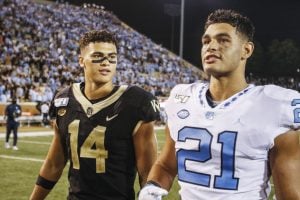
Those partial to Wake Forest will point out that, at least this year, the Deacons should get the nod based on their 5-0 start and national rankings in both the coaches (No. 17) and media (No. 19) polls.
The problem is that there’s no accurate way of determining which team is actually the best and which can definitively claim the “state championship,” since they don’t all play one another and some teams play more in-state opponents than others.
With that in mind, the North State Journal has devised a ranking system designed to bring at least a little clarity to the discussion. Keep in mind, it’s not a perfect form of evaluation, but at least it creates something resembling an even playing field for all seven of the teams involved.
The system works like this:
• Two points for a win against a Power 5 opponent
• One point for a win against a Group of 6 opponent
• A half-point for a win against an FCS opponent
• An extra half-point for a Group of 6 team beating a Power 5 opponent
Based on that criteria, here’s what the current standings look like:
